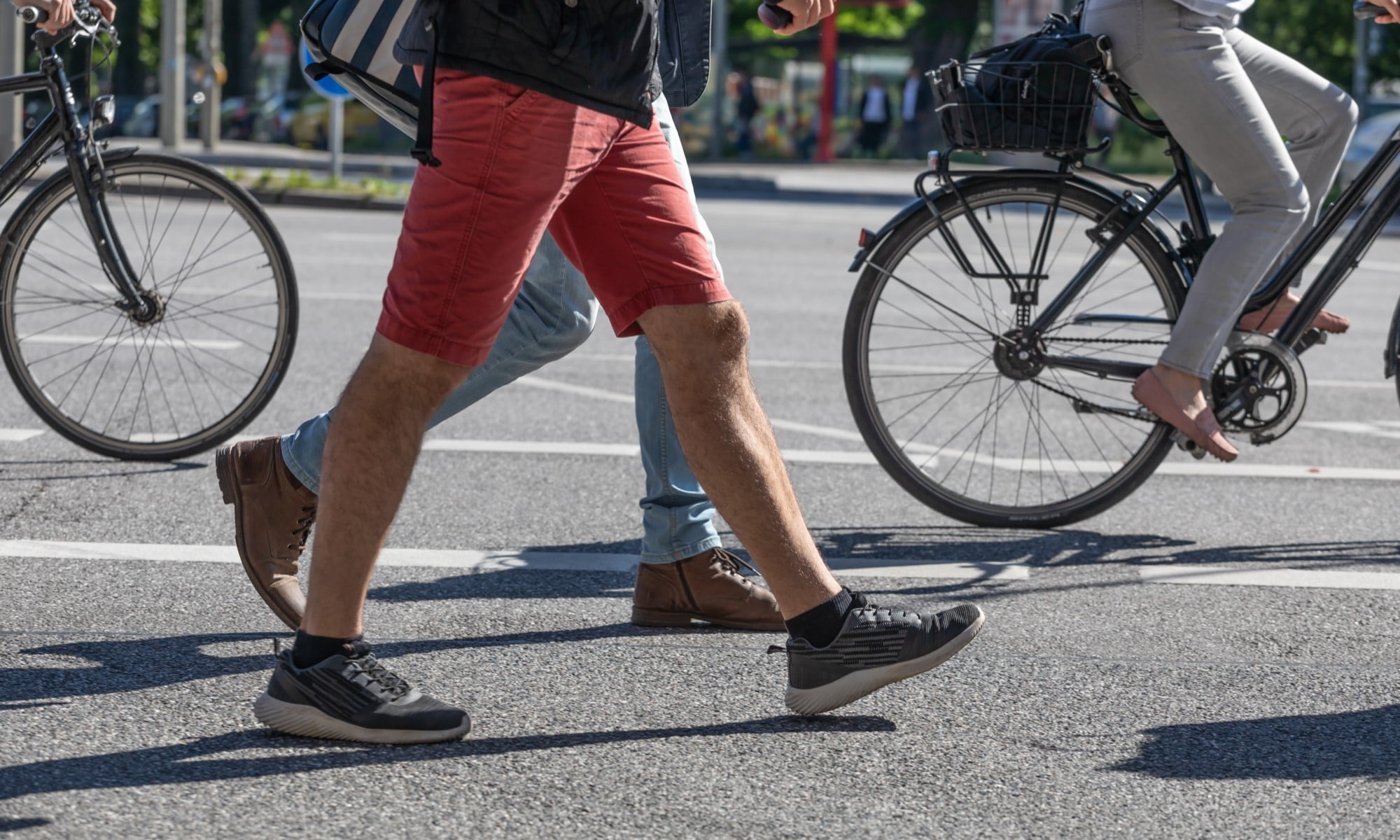
A notice of funding opportunity (NOFO) was posted for the Safe Streets and Roads for All (SS4A) discretionary grant program this past May 26th by the USDOT Office of the Secretary, much to the delight and anticipation of practitioners, advocates, and other stakeholders within the road and traffic safety space. SS4A represents a once-in-a-generation funding opportunity as part of the greater Bipartisan Infrastructure Law (BIL/IIJA), with $1B slated annually from fiscal years 2022-2026—at least $5B over the lifetime of the BIL/IIJA.
The application deadline for this year is on September 15th. Given the narrowing window, the following are key takeaways that we believe eligible applicants should know immediately about SS4A.
There Are Two Pathways to Funding
There are two ways to receive funding under the SS4A grant program: either in the creation of a comprehensive safety action plan (Action Plan) or if you have an Action Plan in place, you can apply for an Implementation Grant to take action on what’s described in your Action Plan. These paths are designed to be sequential, and in our view reflect the Administration and USDOT’s focus on data-driven and methodical approaches to road and traffic safety.
Option 1: Funds to Create a Safety Plan
Safety plans are the foundation of SS4A, and agencies can qualify for federal funds for the development, completion, or supplementation of comprehensive safety action plans. A good safety plan is one that provides a holistic, well-defined strategy to prevent serious injury and death on roadways within a locality, Tribe, or region. The key takeaways for creating an effective safety plan are:
- The importance of goal setting and the weight given to safety analysis and project selections
- The use of data and the best available evidence – this is repeatedly mentioned in the NOFO
- Ensuring that the systems are in place for transparency – and the focus on outcomes that align with the USDOT and Administration’s priorities, specifically when it comes to improved safety and transportation equity
Option 2: Funds to Implement a Safety Plan
Agencies that have already created safety plans may qualify for implementation grants. These include projects and strategies focused around infrastructure, behavioral, and operational activities. Furthermore, implementation grants may also fund planning, design, and supplemental activities in support of an existing safety plan.
Agencies will need to have either an existing safety plan or something substantially similar and compliant with eligibility requirements in order to apply for an implementation grant. Examples of such might include:
- Carrying out speed management strategies through road design, education, and outreach
- Implementing standard and novel data collection and analysis technologies and strategies
- Conducting education campaigns to accompany new or innovative infrastructure
Recommended Best Practices

A key part to getting the most out of SS4A is collaboration, and it is mentioned multiple times throughout the NOFO
The USDOT encourages joint applications and recognizes the value of eligible parties working together. Additionally, while state agencies are not eligible for SS4A, the USDOT does encourage potential applicants to reach out to state transportation agencies and other stakeholders who may have more experience with federal grants. Collaboration is also strongly encouraged when it comes to working toward addressing the safety of vulnerable road users & other travelers, and on the subjects of equity, and mitigating the impacts of climate.
The private sector can also be a partner in these efforts. Applicants should also consider ways to work with companies and organizations – specifically those that leverage technology, data and innovation – and who are also working in the road and traffic safety space.
Keep the three themes of safety, climate, and equity at the forefront, and be solutions-focused
Applicants are tasked with finding new ways to approach the issue of road and traffic safety, and relying on different techniques to reach goals relating to improved safety, climate change, and transportation equity. The spirit is to ensure more voices and perspectives are taken into account in order to mitigate disparate impacts, all while measuring and understanding the outcomes of countermeasures and interventions as they pertain to the collective goal of zero.
Leverage technology and innovation
Technology is essential—not only when it comes to accurate data collection, but also exploring tools and software that can help applicants better understand what’s happening on the roads and measure the impact of the actions taken. This is an opportunity to leverage new and innovative solutions, and applicants are encouraged to do so many times in the NOFO.
From our view, the key takeaway from the above recommended best practices is that if the process feels familiar or routine, it may be worth taking a step back to make sure you’re aligned and actively working to leverage data and insights, bring more voices to the conversation, and are setting up processes to measure outcomes and impact.
Evaluation and Rating Process

Applications will be evaluated based on how well they align with program objectives in addition to the key overarching themes within the BIL/IIJA, including:
- Safety impact
- Equity and engagement & collaboration
- Effective practices and strategies
- Climate change and sustainability & economic competitiveness
Each of these criteria will be given a rating based on how well applications align, with the following possible ratings:
- High
- Medium
- Low
- Non-responsive
How each of the above items will be assessed may vary based on the type of grant you’re seeking (Action Plan or Implementation), so it is important to pay attention to definitions and any included metrics. For example, when it comes to an Action Plan application, to receive a HIGH rating the USDOT is looking to see if the proposal addresses a substantial safety problem and that is strongly supported by data analysis. To receive the same HIGH rating for an Implementation Grant, the USDOT is looking to see that projects and proposed strategies are highly effective, based on evidence and use a systemic approach.
Please refer to the USDOT website for full color and context, but for now, simply bear in mind that applications will be evaluated based on the above criteria, are subject to deeper scrutiny depending on the selected program opportunity, and are all well-supported by data and technology.
How INRIX Can Help
SS4A represents a unique opportunity for cities, counties, Tribal governments, and localities to invest in virtual and software-based solutions within their communities.
At INRIX, we’re here to help and can be of assistance when it comes to connecting the dots when it comes to federal funding opportunities and the various technology solutions that can make roads safer for all travelers—regardless of mode.
Our team includes experts in the transportation and public policy spaces, and we’re more than happy to provide the following:
- Information about our suite of technology solutions that help agencies align with federal funding opportunities and other programs
- Deep dives into new and updated federal funding opportunities and other related programs and initiatives
- Resources and materials designed to assist eligible entities at all levels of government, and anyone interested in intelligent mobility
Watch our on-demand webinar to learn more or contact us directly for a free consultation.
Resources
- INRIX Blog – “How to Prepare for a USDOT Notice of Funding Opportunity”: https://inrix.com/blog/how-to-prepare-for-notice-of-funding-opportunity/
- INRIX On-Demand Webinar for Understanding the NOFO and SS4A: https://inrix.com/resources/on-demand-webinar-understanding-the-nofo-and-submitting-competitive-grant-applications-for-the-safe-streets-and-roads-for-all-program/
- USDOT Website for the NOFO for SS4A: https://www.transportation.gov/grants/SS4A
- USDOT Website for the Discretionary Grant Process: https://www.transportation.gov/rural/toolkit/usdot-discretionary-grant-process




